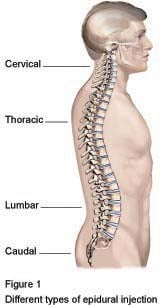What is an Epidural Injection?
An epidural injection involves injecting local anaesthetics and steroids into an area called the epidural space, near your spinal cord. This numbs your nerves to provide pain relief. The steroids reduce inflammation and may make the pain relief last longer.
Consultants and Clinic Times

Dr Israa Al-Shakarchi
MBBCh, FRCP (Rheum), MSc, BSc, PGCME, FHEA
Specialities
Rheumatology


Mr Pratipal Kalsi
BSc, MBBS, MRCS(Lon), FRCS(Lon), PhD
Specialities
Neurosurgery, Spinal Surgery

Professor Marios Papadopoulos
MA MD FRCS(SN)
Specialities
Neurosurgery, Spinal Surgery


Mr Christian Ulbricht
MD, MRCS, FRCS(Neurosurg)












